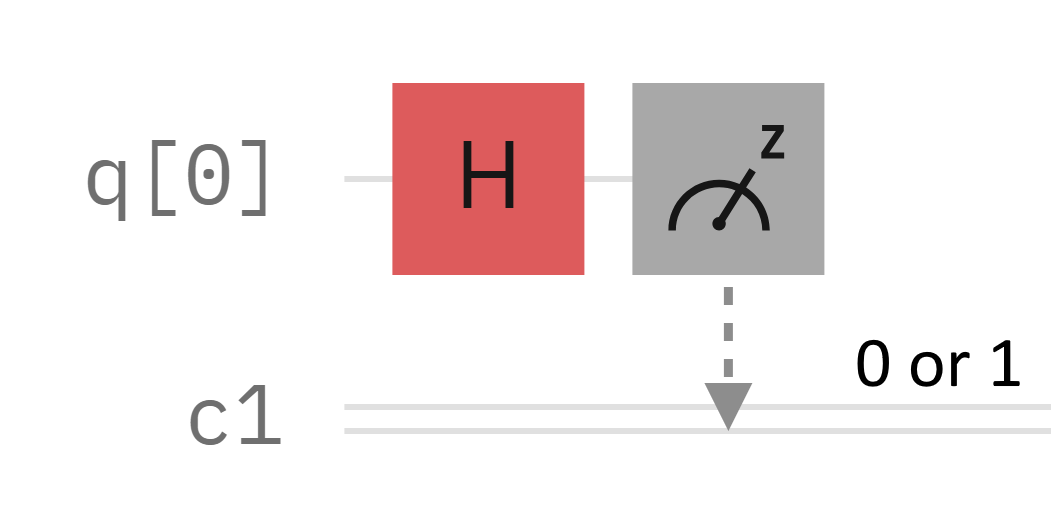Have you ever been stuck deciding between A or B? React or Svelte? Grad school or industry? Chocolate or vanilla? Wouldn't it be nice if you could split the universe in two, so that at least if you didn't make the right decision, you know there's a version of you in another universe that did?
It might sound crazy, but it takes about 4 seconds to run this circuit, which splits the universe in two and tells you which universe you're in. You can legitimately run it right now.

This circuit is basically a unix fork(). It prepares a qubit that's half 0 and half 1, and then immediately measures it for you.
I'll keep the math low in this post, but this just means you're forcing the universe to decide whether the qubit is truly a 0 or a 1, since the universe never lets you measure half a qubit.
The universe essentially branches in two: in one branch it decides 0, and in another it decides 1.
You can determine which branch you're in based on the readout, and make your decision based on that info1.
There are two caveats:
- I've been assuming many-worlds. However, if you believe there's only one universe, the implications might be even more meaningful. The outcome provably does not exist until you measure it2. The universe is making a decision for you, and it's not hedging that decision with other alternatives.
- For this to work, IBM's quantum computer must not have any measurement or decoherence errors. This circuit above is laughably small though, and you can run big circuits today and still get coherent results, so this is usually a valid assumption.
This really works, and it's one of the few useful (maybe) things we can do with quantum computers today. I genuinely think it's a fun & potentially meaningful way to make a decision.
Footnotes
-
You don't get to choose the readout. After all, some version of you needs to be willing to do either outcome for this to work. You do get to control the probabilities, though. This circuit is 50/50, but you can modify it to produce any other probability split. ↩
-
The GHZ experiment is classic proof, but I prefer the delayed double slit experiment. ↩